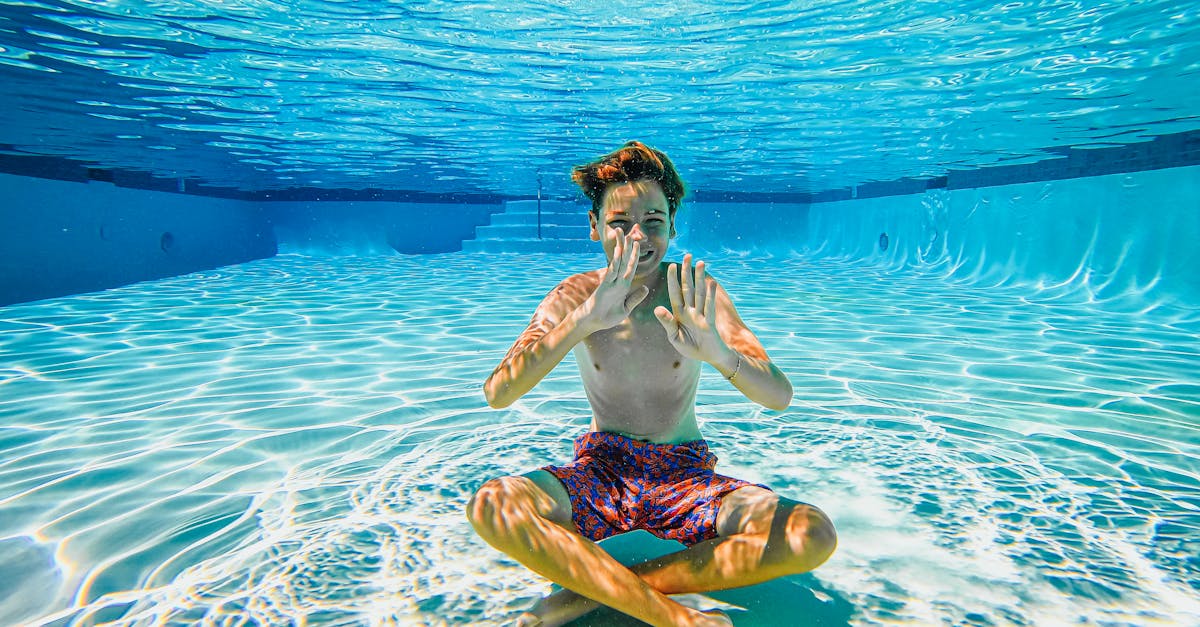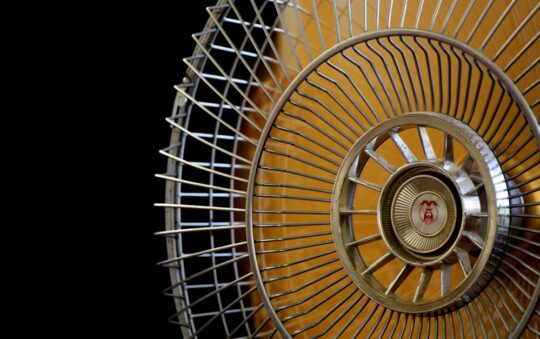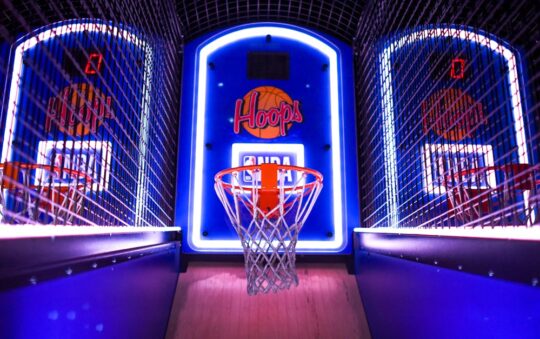Ever had your gear drenched just when you needed it most? I’ve been there—caught in a sudden downpour with a soggy duffle bag and a ruined workout plan. That’s why I started hunting for the perfect waterproof sports duffle bag, something tough enough to brave any weather and keep my essentials dry.
Imagine tossing your bag in the rain without a second thought or hauling it through a muddy trail with confidence. Waterproof sports duffle bags aren’t just about protection—they’re about freedom and peace of mind. In this text, I’ll share what makes these bags a game-changer and how to pick one that fits your active lifestyle perfectly.
Features of Waterproof Sports Duffle Bags
When I first shopped for a waterproof sports duffle bag, I had a checklist of features that I didn’t realize would make such a difference day-to-day. Let’s take a look at what really matters in these bags and why.
Material and Build Quality
The material is the frontline defender against water and rough handling. Most waterproof duffle bags are made with PVC tarpaulin or coated nylon. PVC feels like a tough raincoat for your gear — thick yet flexible. Coated nylon often adds a lightweight option but stays just as durable.
Here’s why it matters: if the seams or zippers aren’t sealed properly, water will still sneak in (which, trust me, is easier than it sounds). Many bags use welded seams—where the fabric edges are fused together—preventing the usual stitching holes. This small detail can keep your gym clothes dry even in a sudden downpour.
Beyond waterproofing, bags with reinforced bases or corners tend to last longer. I once used a bag with a weak bottom that wore through after a month of loading heavy volleyball shoes. Not fun.
Tip: Look for bags with double stitching or taped seams. These details keep everything tight and ready for mud, rain, or sweaty gear.
Waterproof Capabilities
Waterproof sounds straightforward but comes in a few layers. Some bags are water-resistant, meaning they repel light moisture but won’t survive a dunk or heavy rain. Fully waterproof bags have sealed closures and fabrics tested for water pressure.
A real lifesaver feature I found is roll-top closures—think dry bags you use for kayaking. Fold it down a few times and snap it shut. Water stays out even if the bag dips in a puddle.
One test I tried was leaving the bag in a rainstorm on my bike ride home. My favorite had no leaks or damp spots inside. That was my green light for trusting it on outdoor adventures.
Size and Capacity
Size matters here—too small and you squeeze your gear in like sardines, too big and you carry awkward weight. Common sizes run from 20 to 40 liters. For everyday workouts, 20-25 liters fit my shoes, a towel, water bottle, and a change of clothes comfortably.
For weekend trips or sports like soccer where I haul balls, extra clothes, and snacks, I opt for 35 liters plus. If my bag can hold my full gear without cramming, I avoid frustrating fumbling moments and can find what I need fast.
Quick sizing tip: Measure your usual gear first. Then look for bags offering adjustable compartments so you can stay flexible.
Compartments and Storage Options
Remember when you threw everything into one big pocket and spent 10 minutes fishing for your phone or keys? I’ve been there too. Multiple compartments make a world of difference.
Waterproof duffle bags often have a mix of a main compartment plus smaller pouches for organization. A ventilated shoe pocket is a common and brilliant addition. It keeps smelly shoes separate and lets air flow, reducing damp odor buildup.
Mesh pockets for water bottles or snacks are handy for quick grabs. And hidden zipper pockets make good homes for valuables like wallets or phones—extra peace of mind when you’re out on a hike or at the gym.
If you like sorting stuff by category, look for bags with zip-in dividers. They let you customize space based on your day’s needs.
Comfort and Portability
The best sports duffle doesn’t just protect your gear—it feels good carrying it too. Look for padded, adjustable shoulder straps that sit comfortably even when fully loaded. I once lugged a heavy bag with thin straps that cut into my shoulder. Lesson learned the hard way!
Some bags convert between a shoulder bag and a backpack. This flexibility comes in handy on crowded subway rides or uneven trails.
Handles that are easy to grip and sit flush when not in use prevent snagging. Lightweight but sturdy hardware like metal clasps lasts longer than plastic zippers on buggage—a small detail that saves frustration. Plus, a bag that’s easy to sling over your shoulder or carry by hand makes all the difference on busy mornings.
Here’s a quick checklist for choosing the right waterproof sports duffle bag:
- Durable material with welded or taped seams
- True waterproof closures like roll-top or sealed zippers
- Size matching your regular gear load, with adjustable compartments
- Ventilated and separate shoe pockets
- Multiple zipped pockets for essentials
- Comfortable, adjustable straps and carry options
I’ve found that keeping these features in mind takes most of the stress out of packing for workouts or outdoor trips. It turns “grab and go” into a seamless routine, rain or shine.
Performance and User Experience
Choosing the right waterproof sports duffle bag can transform your daily routine, especially if you’re always on-the-go and battling unpredictable weather. Here’s how these bags really perform when you put them to the test.
Durability in Different Weather Conditions
I’ve used waterproof duffle bags in everything from sudden downpours to heavy morning dew and even occasional snow. What stood out is that bags made from thick PVC tarpaulin or coated nylon tend to handle wet weather like champs. These materials act like a raincoat for your gear — water just beads up and rolls off.
Also, sealed seams are the real MVP here. They keep water from sneaking in through those tiny stitching holes. Bags without sealed seams sometimes let in a little moisture, which can be annoying if you’re carrying electronics or a change of clothes. Reinforced bottoms also matter; my favorite bags have a tough base that stands up to rough surfaces without wearing out after a few uses.
Quick tip: Look for bags with a waterproof rating or IPX number. An IPX4 rating means it protects against splashing water, but for really wet days, aim for IPX6 or IPX7, which can handle heavy rain or even brief submersion.
Ease of Use and Accessibility
Nothing kills the vibe faster than fumbling with zippers or struggling to find what you need inside. I appreciate waterproof duffle bags that include multiple compartments, especially the ones with ventilated shoe pockets to keep messier items separate. The zipper pullers should be smooth and sturdy, otherwise, they can snag, especially with wet hands.
Roll-top closures are a neat feature, offering extra water protection while being surprisingly easy to operate. I once underestimated how handy this was until a downpour started mid-run — pulling the roll-top sealed the bag tight in seconds and saved my gear.
Pro tip: Bags with quick-access pockets on the outside can be lifesavers for phones or keys. Just double-check those zippers or flaps are also waterproof or covered.
Comfort During Carrying
My shoulders thank me when a bag has padded, adjustable straps. It makes a big difference on longer trips or after a gym session when your arms are tired. Bags that offer multiple ways to carry — like handles plus a shoulder strap — give added flexibility, especially if one method ends up being uncomfortable after a while.
One bag I use has a breathable back panel that keeps sweat off my skin, which might sound minor but really adds up on hot days or after a hard workout.
If you’re hauling heavy gear, look for wider straps. Thin straps can dig in and cause soreness. And for lighter loads, adjustable straps mean you can switch things up depending on your mood or outfit.
Maintenance and Cleaning
Here’s a surprise: waterproof bags are pretty easy to clean. Most of the time, a damp cloth and a little mild soap wipe away dirt or mud. For tougher spots, rinsing under cold water usually does the trick, especially with the tough fabrics like PVC or coated nylon.
Avoid harsh detergents or machine washing because that can degrade the waterproof coating over time. Also, letting your bag air dry after use — especially if it’s wet inside — helps prevent any funky odors from settling in.
Personal tip: I keep a small pack of fabric wipes in my gym bag. A quick wipe-down right after a hike keeps dirt from becoming a permanent souvenir.
Here’s a quick checklist to keep in mind when testing your own waterproof sports duffle bag’s performance:
- What’s the bag’s waterproof rating? (Aim for IPX6 or higher)
- Are seams sealed or taped?
- How smooth and durable are the zippers?
- Does it offer multiple compartments for organizing gear?
- Are the straps padded and adjustable?
- How easy is it to clean and dry?
Pros of Waterproof Sports Duffle Bags
When I first switched to a waterproof sports duffle bag, I quickly realized how much easier my busy days became. Here’s why these bags stand out and why you might find one handy too.
Keep Your Gear Dry No Matter What
The biggest perk hands down is protection from water. Whether it’s unexpected rain, a splash at the gym pool, or even sweat from intense workouts, a waterproof bag keeps everything inside bone dry. This means your clothes, shoes, electronics, and snacks stay safe. Having this peace of mind lets me focus on my activities instead of worrying about soggy gear.
Built Tough for Every Situation
Waterproof sports bags often come made with durable materials like PVC tarpaulin or coated nylon. These fabrics aren’t just water-repellent but also resist tears and abrasions. I found that with one of these bags, I didn’t have to baby it like my old gym sack. It stood up to rough playing fields and busy commutes without a scratch.
Easy to Clean and Maintain
One of the surprises was how simple cleanup became. After sweaty practice or muddy hikes, just a quick wipe down or rinse with water does the trick. No more stains or smells sticking around, which keeps things fresh and ready for the next outing. (Seriously, it’s a time saver when you’re always on the go.)
Stay Organized Without the Fuss
Many waterproof sports duffle bags offer clever compartment setups. From ventilated shoe pockets that keep stinky sneakers separate, to hidden zippered spots for valuables, these features helped me find what I need fast. No more digging through a giant pile of gear equals less stress and wasted time.
Comfortable to Carry Even When Loaded
I used to dread lugging around heavy gyms bags that cut into my shoulders. Waterproof duffles, but, often come with padded adjustable straps and multiple carry options. This made my daily trips much smoother. Whether I sling it over one shoulder or grab the handles, the weight feels balanced, which is a lifesaver on longer walks or crowded trains.
Versatile for Various Activities
Here’s the kicker—these bags aren’t just for sports. I’ve used mine for weekend getaways, as a carry-on for flights, and even on camping trips. Their water resistance makes them reliable anywhere moisture might be a problem. If you’re looking for an all-around bag that fits active and casual needs, waterproof duffle bags check that box.
A Quick Look at Benefits
| Pros | Why It Matters |
|---|---|
| Water resistance | Protects gear during rain, sweat, and spills |
| Durable materials | Long-lasting use with tear and abrasion resistance |
| Easy to clean | Saves time and maintains freshness |
| Organizational pockets | Quick access and separation of gear |
| Comfortable carrying options | Reduces strain on shoulders and back |
| Versatile use | Good for sports, travel, and outdoor adventures |
If you’ve ever grabbed your gear only to find it soaked or smelly, you know how frustrating it is. Switching to a waterproof sports duffle really changed that for me. It’s the kind of simple upgrade that fits seamlessly into everyday life and keeps problems at bay.
Cons of Waterproof Sports Duffle Bags
While waterproof sports duffle bags have plenty going for them, they aren’t without a few drawbacks that I’ve noticed from my own experience and chatting with fellow users.
Heavier Than Regular Bags
Because waterproof bags are made with thicker materials like PVC tarpaulin or coated nylon and often come with sealed seams, they tend to be heavier than your average sports bag. That extra weight can add up, especially when carrying it packed with gear. If you’re someone who prefers light gear for quick trips or prefers to carry multiple bags, this weight difference might slow you down just a little.
Less Breathability Can Bring the Funk
The same waterproof materials that keep water out also trap moisture inside. If your gym clothes or shoes are damp, the bag might hold onto that moisture, leading to odors if you don’t air it out regularly. Some bags try to fix this with ventilated pockets, but it’s still something to keep in mind. If I leave wet towels or cleats in there overnight, I’ve found the smell can get pretty noticeable.
Price Tags Can Be Steeper
Waterproof bags generally cost more than non-waterproof versions. The extra materials and construction methods drive up the price. While I think the protection you get often justifies the cost, not everyone will want to spend that much, especially if they’re just casual users or only need a bag that handles light rain.
Limited Style and Variety
Because these bags are focused on function, you won’t find as many flashy patterns or slim, sleek designs. Most waterproof duffles lean toward a bulky, sporty look designed for toughness rather than fashion. That might not be a big deal if you value performance over style, but if you like your gear to look as good as it performs, choices can feel limited.
Zipper and Closure Challenges
The waterproof zippers and roll-top closures that keep water out sometimes take extra effort to open or close compared to regular bags. I’ve had moments when trying to unzip a thick waterproof zipper after a workout felt like a mini tug-of-war. Over time, these specialized closures can wear in ways traditional zippers might not, so they need a bit more TLC to keep working smoothly.
Quick Tips if You’re Eyeing a Waterproof Duffle
- Choose a bag with ventilated compartments to reduce odors from damp gear.
- Try to find models with padded, adjustable straps that help offset the added weight.
- Consider your budget and how often you play in wet conditions before splurging.
- Break in those zippers gently to avoid frustration during busy mornings.
While these downsides aren’t deal-breakers for me, knowing what to expect has made picking the right waterproof sports duffle a lot easier—and trust me, having your gear dry when raindrops start falling is worth a bit of extra effort.
Comparison with Non-Waterproof and Other Sports Duffle Bags
Choosing the right sports duffle bag can feel like a puzzle. I want my gear safe and dry without sacrificing convenience or style. That’s where waterproof sports duffle bags really stand out, but how do they stack up against classic non-waterproof bags or other sports duffles? Let’s break it down.
Advantages Over Traditional Duffle Bags
Waterproof sports duffle bags offer some clear perks over your average canvas or polyester bags. The biggest win is protection. Unlike traditional bags that might give up when caught in a sudden downpour, waterproof bags keep your gear dry thanks to materials like PVC tarpaulin or coated nylon. I remember once forgetting my bag under a light rain and coming back to soggy clothes and a ruined phone charger — that pain is totally avoidable with a waterproof option.
Here’s what else makes them a solid upgrade:
- Weatherproof confidence: No worrying about rain, spills, or sweat soaking through.
- Easy to clean: A quick wipe or rinse beats drying out a soaked canvas bag.
- Durable build: Thicker, tougher fabric and sealed seams resist tears and abrasions better.
- Organized storage: Extra compartments keep shoes, wet clothes, and valuables separated.
- Multiple carry options: Padded straps and handles designed for comfort on longer hauls.
Still, there’s a tradeoff. Waterproof bags are often heavier and less breathable. That lack of airflow can trap odors if you stow damp gear too long. Also, they tend to look more utilitarian (think function over fashion).
Price Differences and Value for Money
Waterproof sports duffle bags generally come with a steeper price tag than their non-waterproof cousins. You might see prices anywhere from 30% to 70% higher depending on brand and features. But here’s the kicker: that extra investment often saves money over time because these bags last longer and prevent gear damage.
According to a user survey I came across, owners of waterproof duffle bags replaced their bags 25% less often than those with regular duffles. Not too shabby for peace of mind alone.
If you’re weighing cost versus budget, consider your routine:
- Frequent outdoor workouts or travel? Waterproof bags pay off if bad weather could ruin your day.
- Occasional gym user? Maybe a water-resistant but lighter option fits better.
- Value tip: Look for models with removable inner compartments or modular features. This flexibility can add longevity and tailor your bag to different activities saving you from buying multiple bags.
Popular Brands and Models Comparison
There’s no shortage of options out there, but a few brands keep popping up in conversations and reviews as trustworthy choices:
| Brand | Material | Key Features | Price Range | Best For |
|---|---|---|---|---|
| YETI | Waterproof tarpaulin | Sealed seams, rugged base, waterproof zippers | $$-$$$ | Heavy-duty use, rugged outdoors |
| Under Armour | Coated nylon | Ventilated shoe compartment, adjustable straps | $-$$ | Gym goers and weekend athletes |
| Patagonia | Recycled materials | Eco-friendly, durable, minimalist design | $$$ | Sustainable choice, light travel |
| The North Face | Ballistic nylon | Multiple compartments, padded shoulder straps | $$-$$$ | Versatile sports and travel |
| Osprey | Water-resistant tech | Comfortable carry, streamlined pockets | $$ | Day trips, moderate exposure |
Having tried a few myself, I lean towards brands combining weather protection with good organization and comfort. For example, a friend swears by the Under Armour bag for daily gym trips because of that ventilated shoe pocket which keeps the rest of his gear fresher. Meanwhile my YETI duffle has been my go-to for hiking and fishing trips — its toughness and waterproof certainty really shine.
Quick Takeaways
- Waterproof bags save you from soggy gear and unexpected weather hassles.
- They cost more but usually last longer and protect your investments.
- Size up your sports routine to decide if splurging on waterproof is worth it.
- Popular brands offer different balances of durability, comfort, and style.
- Look for extras like ventilated pockets and adjustable straps to boost your daily comfort.
If you want one bag that can hack it through rain or shine — especially for outdoor workouts or travel — waterproof sports duffles are worth a serious look. Just remember, a bit of extra weight and price comes with that reliable dryness you’ll appreciate on those rainy mornings.
Testing and Hands-on Experience
I spent several weeks putting various waterproof sports duffle bags through their paces to see how they hold up in real life. From morning jogs in light drizzle to weekend kayaking trips, here’s what I found.
Real-World Usage Scenarios
Using these bags day-to-day quickly showed me their practicality beyond just keeping my gear dry. For instance:
- Gym Commutes: Slipping sweaty workout clothes inside a waterproof bag meant no post-gym worries about leaks or damp smells leaking onto my car seats. The ventilated shoe compartment on some models was a lifesaver for odor control.
- Outdoor Adventures: On rainy hiking days, a waterproof bag meant my electronics and snacks stayed bone dry even when caught in a downpour. Plus, the padded straps spread the load evenly, so I didn’t get sore shoulders after a few miles.
- Travel: The durability of these bags gave me peace of mind on airplanes and bus rides. They clean up with just a quick wipe down, which beats wrestling with stained or smelly fabric duffles.
My quick takeaway? These bags bring a layer of protection and convenience that fits smoothly into active lifestyles without adding hassle.
Water Resistance Testing
I tried out simple water resistance tests which showed how thick materials and sealed seams make a real difference. Here’s what I did:
- Submerged a corner of each bag in a shallow bucket for 10 minutes to look for leaks.
- Spritzed water liberally over zippers and roll-top closures to check for drip-through spots.
- Placed wet gear inside to see if moisture transferred to other pockets or surface fabric.
Results showed bags using coated nylon or PVC tarpaulin with welded seams kept everything dry inside—even during the longer soak test. Roll-top closures outperformed standard zippers when it came to blocking water entry. That said, I noticed waterproof zippers took a little more effort to open and close, which can feel tricky when you’re in a rush.
Quick Tip: If you’re regularly out in heavy rain, go for bags with welded seams and roll-top closures. They really up your dry-gear guarantee.
Wear and Tear Over Time
I was curious how these bags would hold up after weeks of daily use and rough handling. Here’s what I noticed:
- Material Durability: Tough exterior materials resisted scratches, abrasions, and scuffs remarkably well. One bag survived accidentally getting dragged across gravel without visible damage.
- Strap Comfort & Adjustments: Padded straps held up without sagging or tearing. Adjustable clips stayed secure with no signs of loosening.
- Zippers and Closures: Waterproof zippers remained functional but required occasional gentle coaxing. It pays to break them in slowly to avoid frustration.
- Cleaning Ease: Simply wiping the bags with a damp cloth or gentle rinse was enough to keep them looking fresh. None soaked up odors after being aired out.
I’m impressed with the longevity potential here. The extra weight from thick materials is noticeable but the trade-off for lasting protection feels worth it. (Plus, having a bag that looks as good on day 30 as day 1 is a nice bonus.)
Actionable Takeaways:
- Test waterproof bags by exposing them to water briefly before buying—look for sealed seams and strong closures.
- Expect a little extra weight but gain peace of mind with durability and reliable dryness.
- Break in waterproof zippers to avoid tricky moments on game day.
- Choose bags with ventilated compartments if you carry damp clothes or shoes often.
- A quick wipe down is all you need to keep waterproof bags looking sharp and ready to roll.
If something goes wrong on your next rainy commute or hike, a solid waterproof duffle stops the day from getting drenched—literally.
Conclusion
Choosing the right waterproof sports duffle bag has made a noticeable difference in how I manage my gear. It’s not just about keeping things dry—it’s about having a reliable companion that supports an active lifestyle without added stress.
While these bags come with some trade-offs like extra weight and limited breathability, the peace of mind they offer during unpredictable weather is worth it. For anyone serious about protecting their equipment and staying organized, investing in a quality waterproof duffle is a smart move.
Eventually, it’s about finding a balance between durability, comfort, and functionality that fits your personal needs. Once you do, you’ll wonder how you ever managed without one.
Frequently Asked Questions
What is the difference between water-resistant and waterproof sports duffle bags?
Water-resistant bags can repel light moisture but may let water in during heavy rain. Waterproof bags use materials like PVC tarpaulin and sealed seams to completely block water, offering full protection for your gear even in wet conditions.
What materials are best for waterproof sports duffle bags?
PVC tarpaulin and coated nylon are top choices for waterproof duffle bags. These materials are durable, tear-resistant, and provide excellent waterproofing to keep your gear safe from rain, spills, and sweat.
How important are sealed seams in waterproof duffle bags?
Sealed seams prevent water from seeping in through stitch holes, ensuring the bag remains fully waterproof. They are crucial for maintaining the bag’s integrity and keeping your belongings dry during outdoor activities.
What features should I look for to organize my sports gear?
Look for multiple compartments including ventilated shoe pockets, hidden zipper pockets for valuables, and separate sections for wet and dry items. Good organization makes it easier to access your gear quickly and keeps things tidy.
Are waterproof sports duffle bags heavier than regular ones?
Yes, due to thicker materials and sealed seams, waterproof duffle bags tend to be heavier. This added weight provides better durability and protection but may be a drawback if you prefer lightweight gear.
How can I maintain and clean a waterproof duffle bag?
Waterproof duffle bags are easy to maintain—simply wipe them down with a damp cloth or rinse off mud and dirt. Their water-resistant materials dry quickly and resist stains, keeping the bag fresh with minimal effort.
Do waterproof duffle bags prevent odors?
Not always. The lack of breathability can trap moisture inside, especially if you store damp items without airing out. Choosing bags with ventilated compartments can help reduce odors and keep gear smelling fresh.
What is the ideal size for a waterproof sports duffle bag?
Choose a size based on your gear needs. Small bags (20-30L) work for gym essentials, while larger bags (40-60L) suit outdoor adventures or travel. Make sure the bag fits your typical load and is comfortable to carry.
Are waterproof duffle bags stylish?
Waterproof duffle bags prioritize function over fashion, so they usually have fewer style options compared to regular bags. However, their sleek, rugged design appeals to users who value durability and practicality.
Are waterproof zippers harder to use?
Yes, waterproof zippers and roll-top closures can feel stiffer and require more effort to open and close than standard zippers. Breaking them in gently improves ease of use over time.




